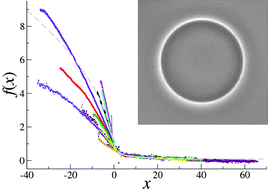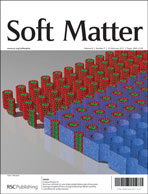Law of corresponding states for osmotic swelling of vesicles
Abstract
As solute molecules permeate into a vesicle due to a concentration difference across its membrane, the vesicle swells through osmosis. The swelling can be divided into two stages: (a) an “ironing” stage, where the volume-to-area ratio of the vesicle increases without a significant change in its area; (b) a stretching stage, where the vesicle grows while remaining essentially spherical, until it ruptures. We show that the crossover between these two stages can be represented as a broadened continuous phase transition. Consequently, the swelling curves for different vesicles and different permeating solutes can be rescaled into a single, theoretically predicted, universal curve. Such a data collapse is demonstrated for giant unilamellar POPC vesicles, osmotically swollen due to the permeation of


 Please wait while we load your content...
Please wait while we load your content...